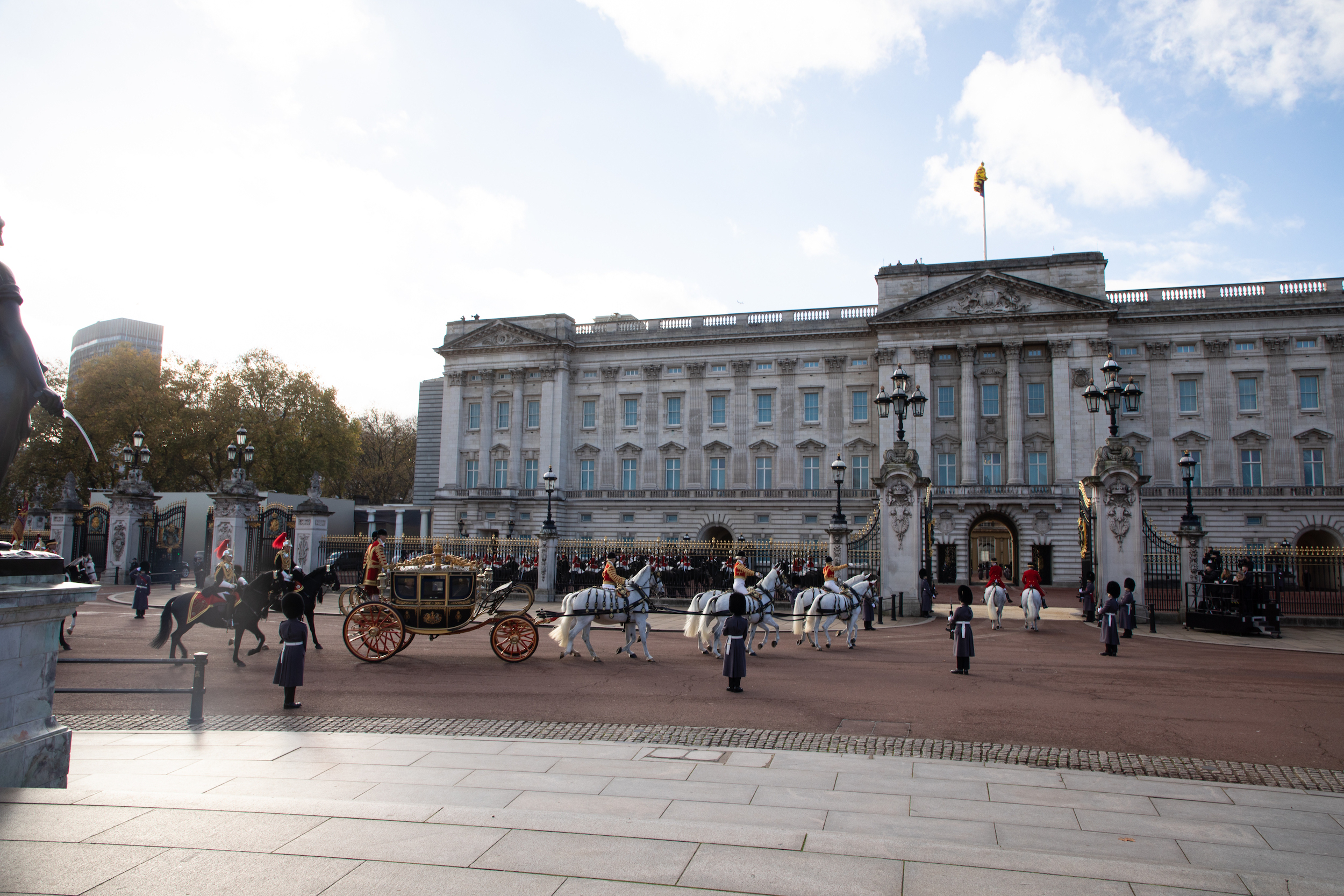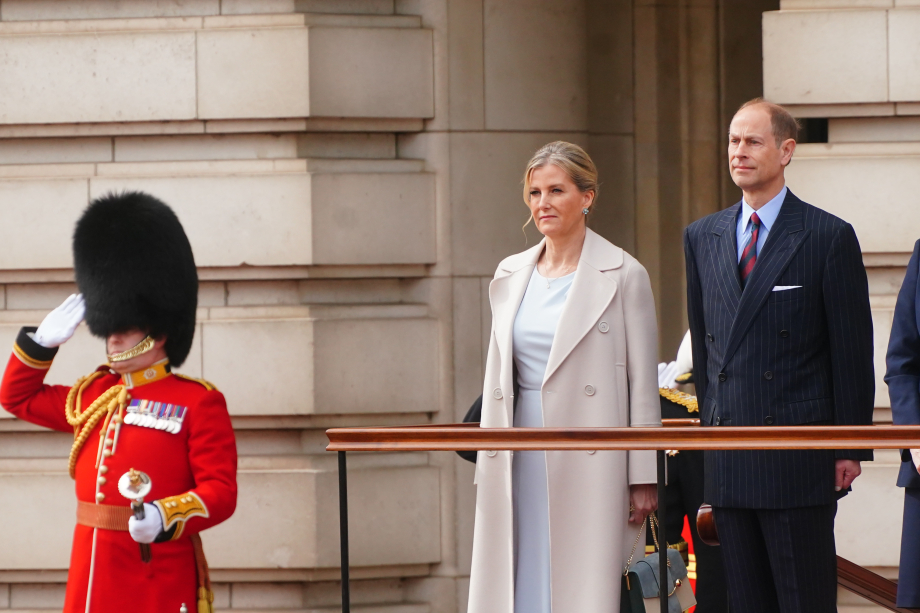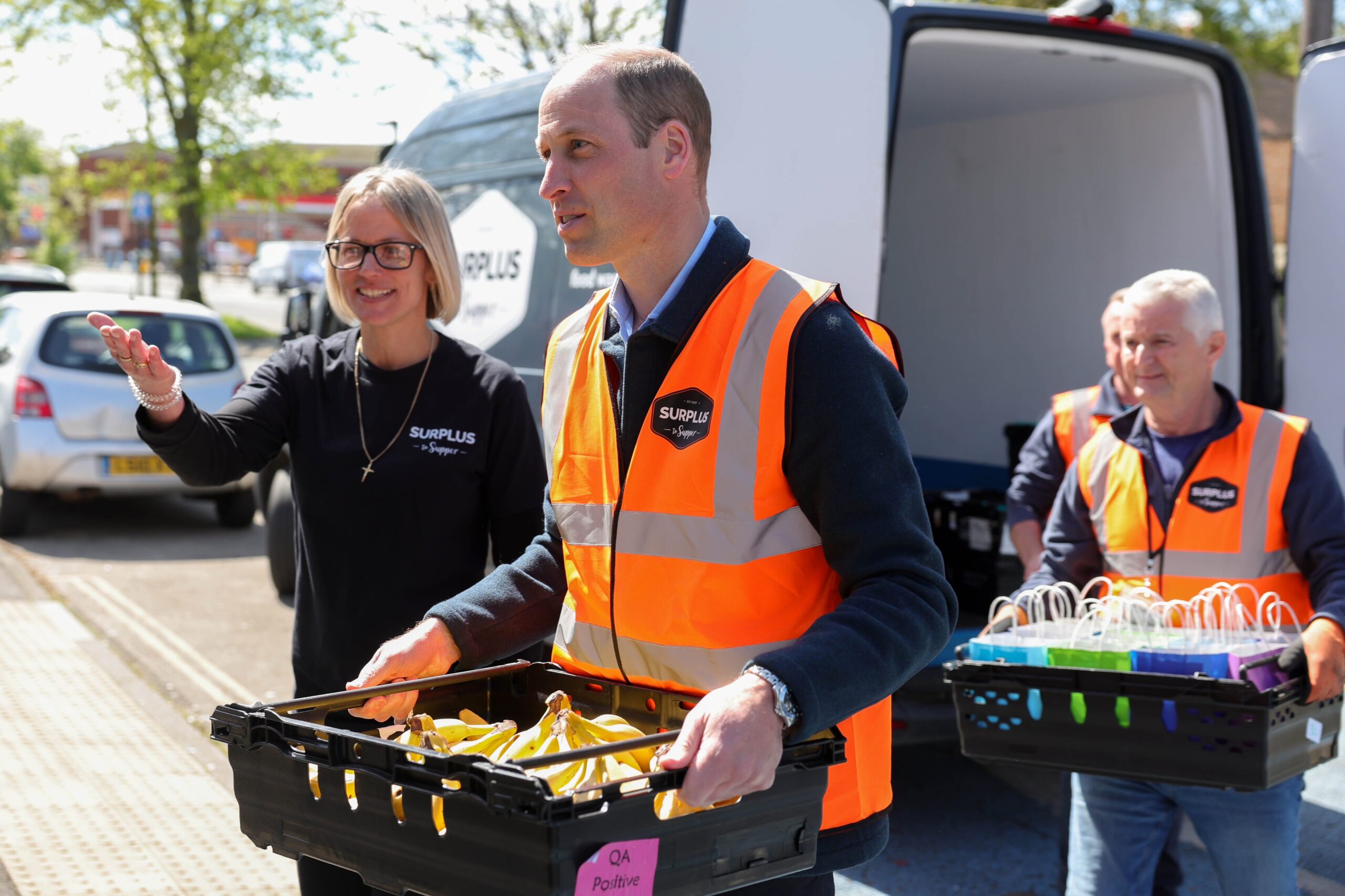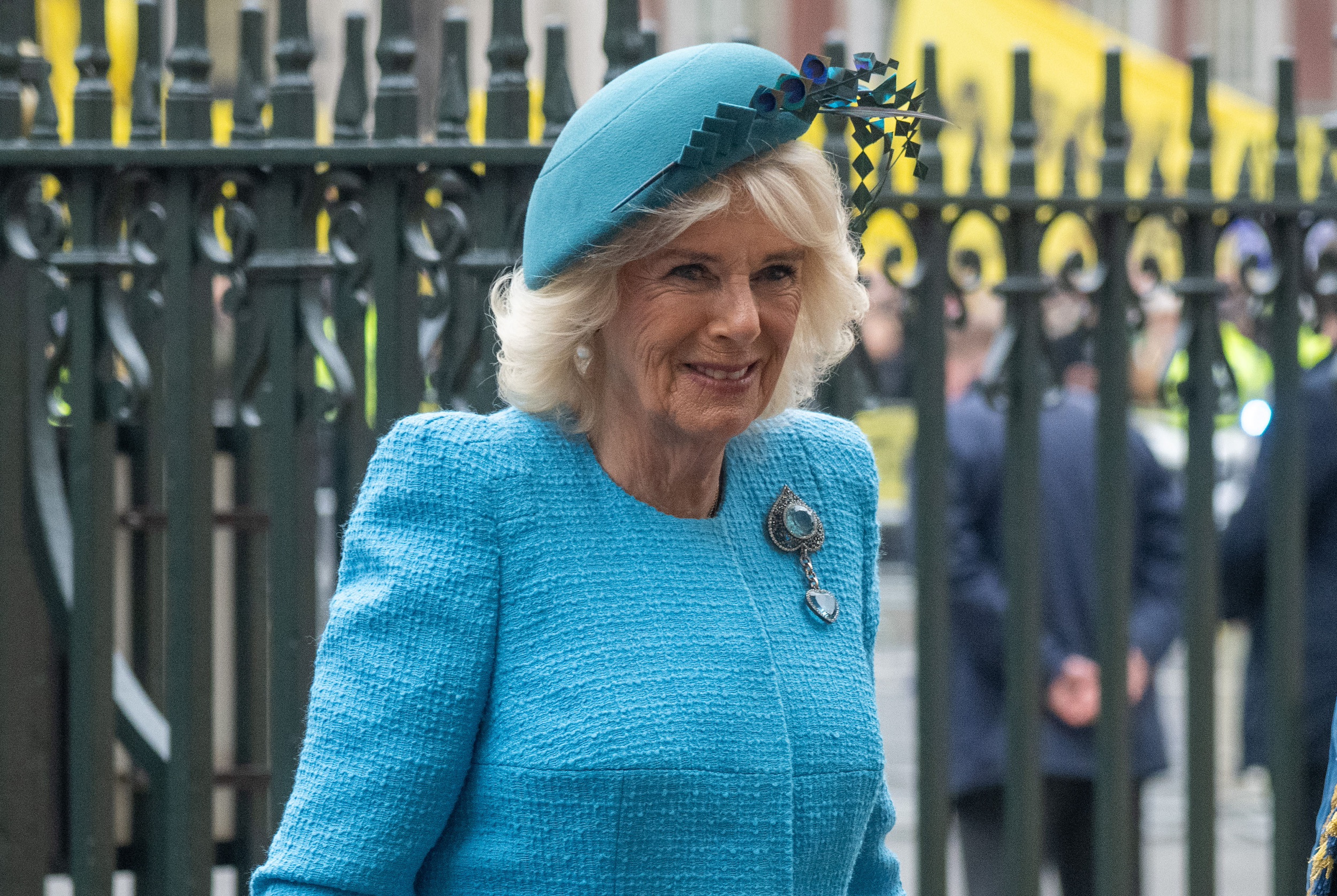On 8th May 1945, VE Day marked the unconditional surrender of Nazi Germany to the Allied forces, ending World War II in Europe. It came a week after Hitler’s suicide in his Berlin bunker.
The bitter fight against fascism had seen tens of millions of lives lost, not only on the battlefield, and through the Blitz, but also in the concentration and extermination camps of the Holocaust.
The country had endured “nearly six years of suffering and peril,” George VI said in a radio message to the nation at 9pm that day.
“Speaking from our Empire’s oldest capital city, war-battered but never for one moment daunted or dismayed […] I ask you to join with me in that act of thanksgiving. Germany, the enemy who drove all Europe into war, has been finally overcome.”
Hear the King’s full VE Day speech below, or watch a shorter clip of him delivering the message here.
Fighting had ceased the day previous, causing celebrations to break out. The 8th May was the second day of jubilation for the country, and a day that saw Winston Churchill announce the good news over the radio, and attend a service of thanksgiving at St Margaret’s, next door to Westminster Abbey.
Throughout the joyful day, the Royal Family made six appearances on the balcony of Buckingham Palace, joining the cheering crowds for whom they, the King and Queen especially, had been symbols of anti-German defiance and British resolve.
Buckingham Palace had been hit nine times directly, destroying a chapel and even killing one member of staff.
The young Princess Margaret – just 14 years old – had an idea, and requested that she and her older sister, Princess Elizabeth, should be allowed to join the crowds in celebration on VE Day.
George VI was initially very worried about this idea, but eventually acquiesced, writing in his diary: ‘Poor darlings, they have never had any fun yet’.
The girls had been staying at Windsor Castle for the duration of the war, unbeknownst to the public.
After dinner, at about 8pm, the princesses left the Palace to partake in the celebrations, with the permission of their parents.
To ensure their safety, they were joined officers and friends, as well as some members of the royal household. This group of 16 included Margaret Rhodes, Jean Woodroffe, Lord Porchester and Peter Townsend.
Jean Barker, later the politician Baroness Trumpington, had caught the train to London from Bletchley Park that evening, and was excited to see London lit up and cheerful once more. “It had been very dim during the blackout,” she explained, “with only searchlights in the sky and very tiny traffic lights – and suddenly there was this sudden blaze of light. It was so exciting!”
Street parties were organised, as local communities shared in the relief of the end of the war.
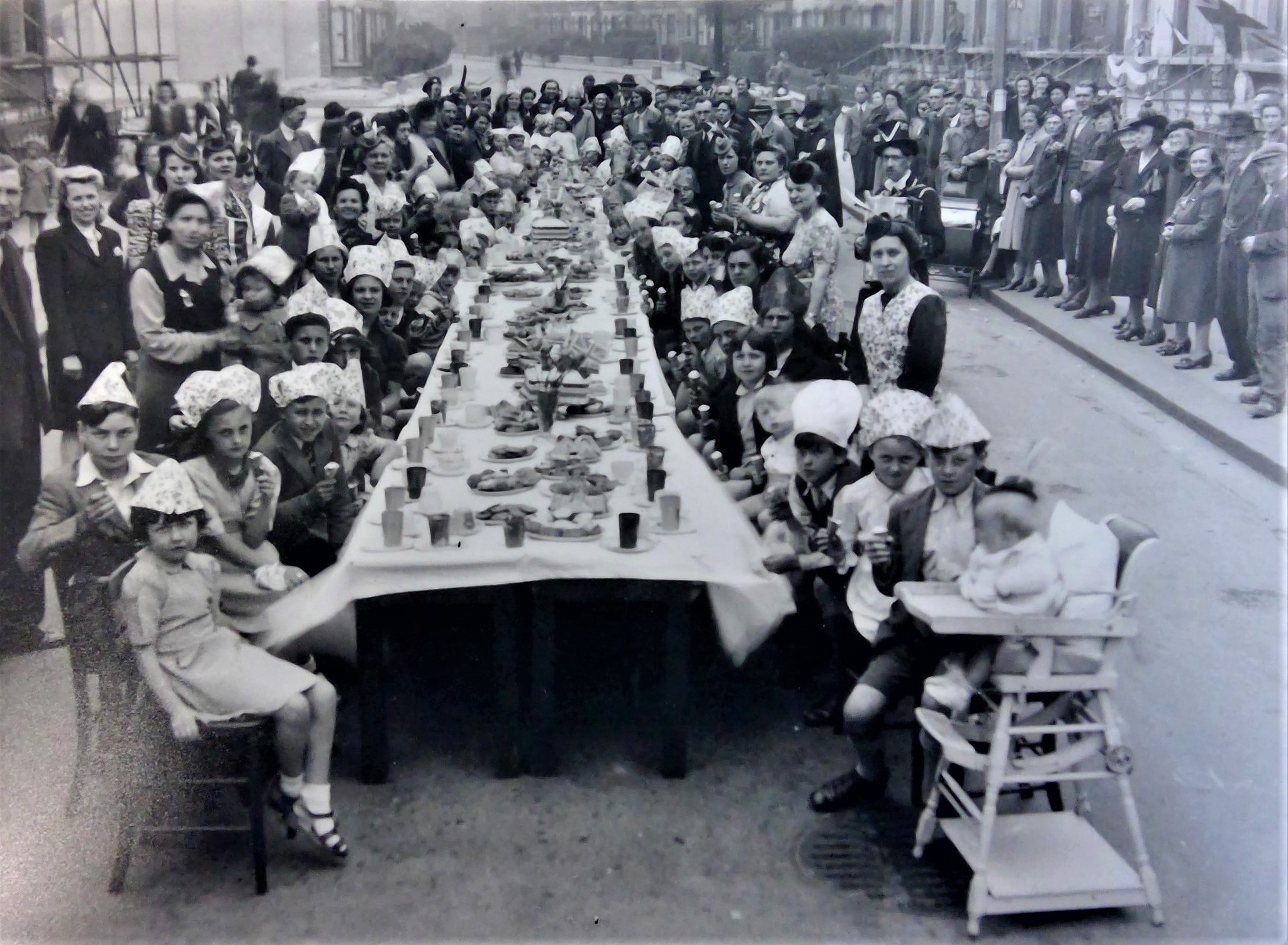
A street party to mark VE Day in 1945 (Hammersmith and Fulham Council)

Joyful VE Day celebrations on Hammersmith Broadway in 1945 (Hammersmith and Fulham Council)
Margaret Rhodes, The Queen’s cousin, and former lady-in-waiting, Jean Woodroffe, have both spoken about the extraordinary events of that day.
“The extraordinary thing was that nobody seemed to take much notice,” remembered Ms Woodroffe of the royal sisters joining the crowds.
Margaret Rhodes explained the events further: “We crossed the forecourt at Buckingham Palace and got to the railings and there were these masses and masses of people.
“There was a general thing of, ‘We want the King and Queen’, which we all frantically joined in with and were amazed when, five or 10 minutes later, the windows opened and they came out onto the balcony. It was like a wonderful escape for the girls,” she commented.
You can hear the raucous cheers for the Royals in the video above, starting at the 4-minute mark.
“I don’t think they’d ever been out among millions of people. It was just freedom – to be an ordinary person.”
Amazingly, we have The Queen’s own recollection of these events. She spoke to the BBC about the day in 1985, calling the experience ‘one of the most memorable nights of my life’.
‘I remember lines of unknown people linking arms and walking down Whitehall, all of us just swept along on a tide of happiness and relief.’
The Queen was 19 years old on VE Day. More than thirty years later, she recorded her memories for a unique BBC Broadcast. #VEDay75 pic.twitter.com/jWf4bebj2e
— The Royal Family (@RoyalFamily) May 8, 2020
Ever conscious of their public role, Princess Elizabeth tried to conceal her identity beneath her Auxiliiary Territorial Service (ATS) uniform and blend in: “I pulled my uniform cap well down over my eyes”.
“A Grenadier officer among our party of about 16 people said he refused to be seen in the company of another officer improperly dressed,” the Monarch added. “So I had to put my cap on normally.”
The year before, in 1944, Princess Elizabeth joined the ATS, undergoing a six-week training course. She joined as an honorary second subaltern under the name Elizabeth Alexandra Mary Windsor, and was assigned the service number 230873.
The Queen learnt to drive in 1945 when she joined the Auxiliary Territorial Service (ATS) as a Subaltern #HM90factshttps://t.co/bDQOVtfTIv
— The Royal Family (@RoyalFamily) March 18, 2016
Embed from Getty Images Embed from Getty Images
Contemporary reports say that the King had ordered that Princess Elizabeth was ‘to be treated exactly the same as any other student officer, with no special privileges because of personal rank.’
“I remember lines of unknown people linking arms and walking down Whitehall, and all of us were swept along by tides of happiness and relief,” she said.
The night took the royal party to the Ritz Hotel, one of the swankiest in London, and a regular location for royal receptions and dinners. “What was amusing is that we went into the Ritz hotel through one door and out of the other day, the other end, doing the conga,” Ms Woodroffe told BBC Radio 4.
Margaret Rhodes similarly remembers the event, beginning about 11.30pm: “For some reason, we decided to go in the front door of the Ritz and do the conga. The Ritz has always been so stuffy and formal – we rather electrified the stuffy individuals inside.
—
“I don’t think people realised who was among the party – I think they thought it was just a group of drunk young people. I remember old ladies looking faintly shocked. As one congaed through, eyebrows were raised.”
The festivities saw the Princesses wander through the royal parks that surround the palace. “There were places like Green Park and St James’s which one would never have walked through at night in the war – and there we were,” Jean Woodroffe said. “There was the usual thing of people kissing and hugging – and even making love. I was shocked by it – I hadn’t experienced that sort of thing happening before in public.’
By midnight, around 50,000 people had gathered around The Mall, their cheers ringing through the streets of Westminster. The King and Queen decided to make a surprise appearance from the balcony, but The Queen explains that their daughters incognito jaunt into London might have had something to do with it: “We were successful in seeing my parents on the balcony, having cheated slightly by sending a message into the house, to say we were waiting outside.”
“We stood outside Buckingham Palace with the crowd and we all shouted, ‘We want the King’ with everybody else until the King and Queen came out onto the balcony,” Rhodes recalled.
The Christmas of 1945 saw the King and Queen’s Christmas card feature a photo of their family on VE Day on the palace balcony.

George VI and Queen Elizabeth’s 1945 Christmas card shared a photo of their family on VE Day (RCT)
In 2015, A Royal Night Out was released, a film dramatisation of the Princesses’ VE Day celebrations.

